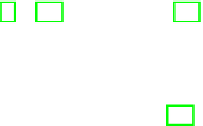Information Technology Reference
In-Depth Information
seek similar videos from a definite database, information retrieval systems have been
established with promising performance in searching accuracy and efficiency, e.g.
[1]. Many of these established systems attempt to search for videos that have been
annotated with metadata
apriori
(e.g. [2]). Nevertheless, there are still a significant
number of footages that have been recorded but not ever used [3]. These footages
normally have not been properly annotated, and hence the retrieval can only be
carried out according to the video contents rather than the annotated information.
Of the generic video contents, the need for the ability to retrieve 3-D models
from databases or the Internet has gained dramatic prominence. Content-based 3-D
model retrieval currently remains a hot research area, and has found its tremendous
applications in computer animation, medical imaging, and security. To effectively
extract a 3-D object, shape-based 3-D modelling (e.g. [4]) and similarity or dissimi-
larity (or distance) computation (e.g. [5]) are two of the main research areas. In this
chapter, we review the algorithms that have been recently developed for the recon-
struction of 3-D shapes from 2-D video sequences. This work is inspired by the fact
that the estimation of 3-D shapes critically affects the retrieval quality of 3-D mod-
els. We believe that the introduction to these summarised approaches here will be
used to effectively facilitate the application of 3-D model retrieval in the databases
or Internet. However, this potential application is beyond the scope of the current
report and omitted in the current report.
One of the commonly used strategies to recover 3-D shapes is the use of multiple
view reconstruction. For example, Bartoli and Sturm [6] used Plucker coordinates
to represent the 3-D lines in the scope of maximum likelihood estimation, and then
they proposed an orthonormal representation to challenge the bundle adjustment
problem. Zhou
et al.
[7] conducted co-planarity checks using cross-ratio invariants
and periodic analysis of the triangular regions. Klaus
et al.
[8] presents a segment-
based method to extract the regions of homogeneous colours, followed by local
window based matching, plane fitting and disparity assignment. Similar approaches
have been introduced in [9], [10]. Sun
et al.
[11] reported a stereo mathcing algo-
rithm using Bayesian belief propagation. The stereo problem was solved by taking
into account the three Markov random fields: a smooth field for depth/disparity, a
line process for depth discontinuity and binary process for occlusion. An iterative
RANSAC plane fitting strategy reported in [12] shows a maximum likelihood es-
timation approach. This technique enables one to obtain the best plane fitting to
the generated 3-D points automatically rather than using empirical criteria, which is
determined according to a limited number of image samples.
Regarding the non-linear surface reconstruction from motion, Laurentini reported
the visual hull as the largest volume consistent with the contours that have been ob-
served from several viewpoints [13]. This approach ignores the small details but
capture the approximate shape of the scene. Roy and Cox [14] introduced a method
using the graph flow theory to generalise the purely 1-D dynamic programming
technique to the 2-D problem raised by disparity maps. Kolmogorov and Zabih
[15] a graph cuts based general theory tp disparity maps in the multi-view con-
text. Narayanan
et al.
[16] reconstructed several depth maps that are aggregated into












